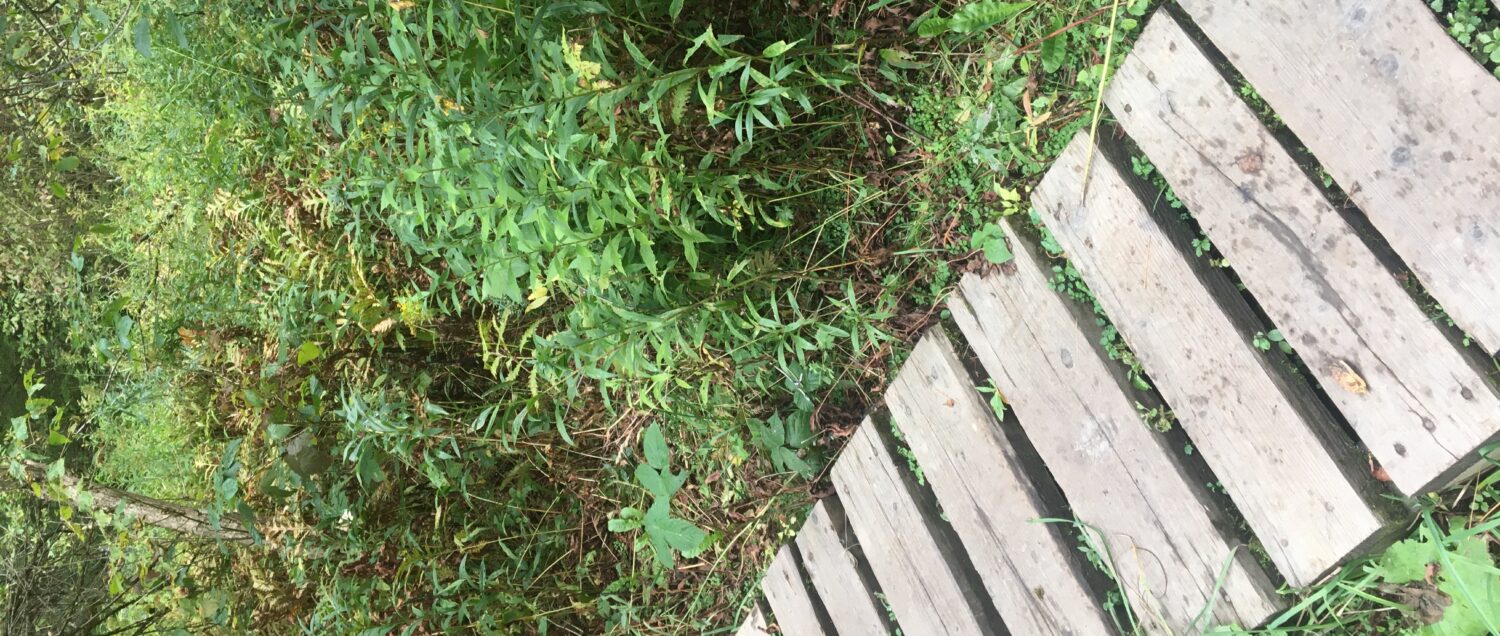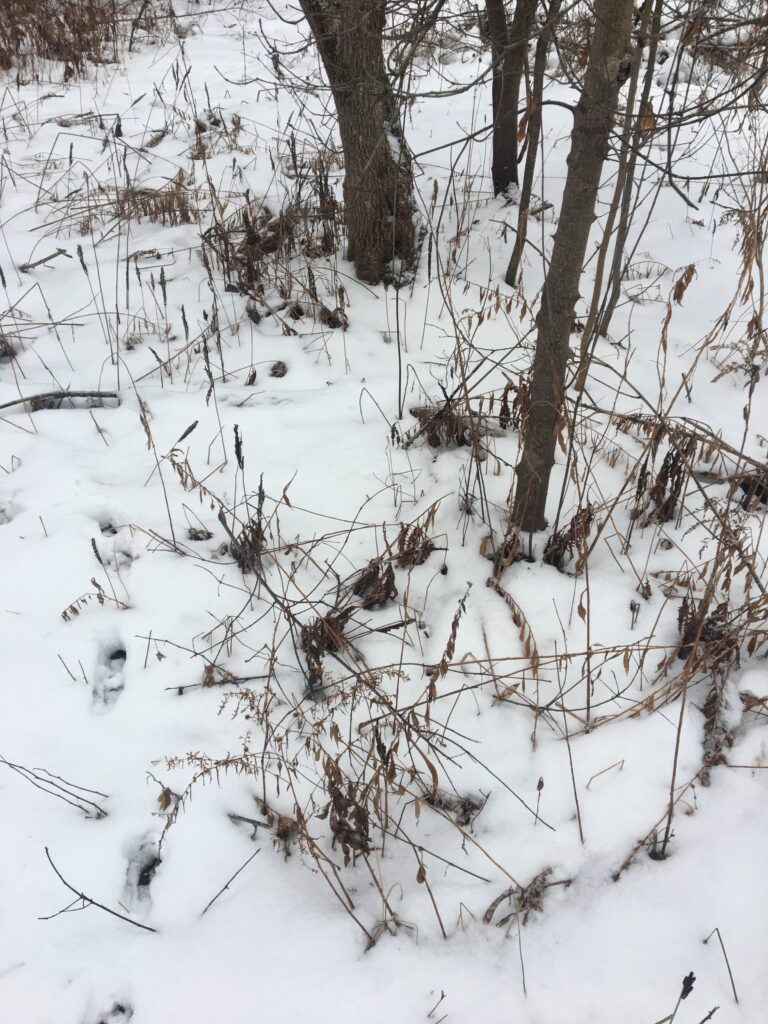Had a good time slipping into the centennial woods today, but could barely climb my way out. Everything was covered in snow, which had been wet and compacted to form mostly ice. The spot at the river looks a little different from when I last saw it, which was Novemebr 12th of 2019.
Phenological changes: A lot more of the leaves which were around last time are decayed now. There are still some on the low growing plants, but they are very very brown. Everything is covered in snow, and it is very quiet except for the flow of the stream.
Big picture:

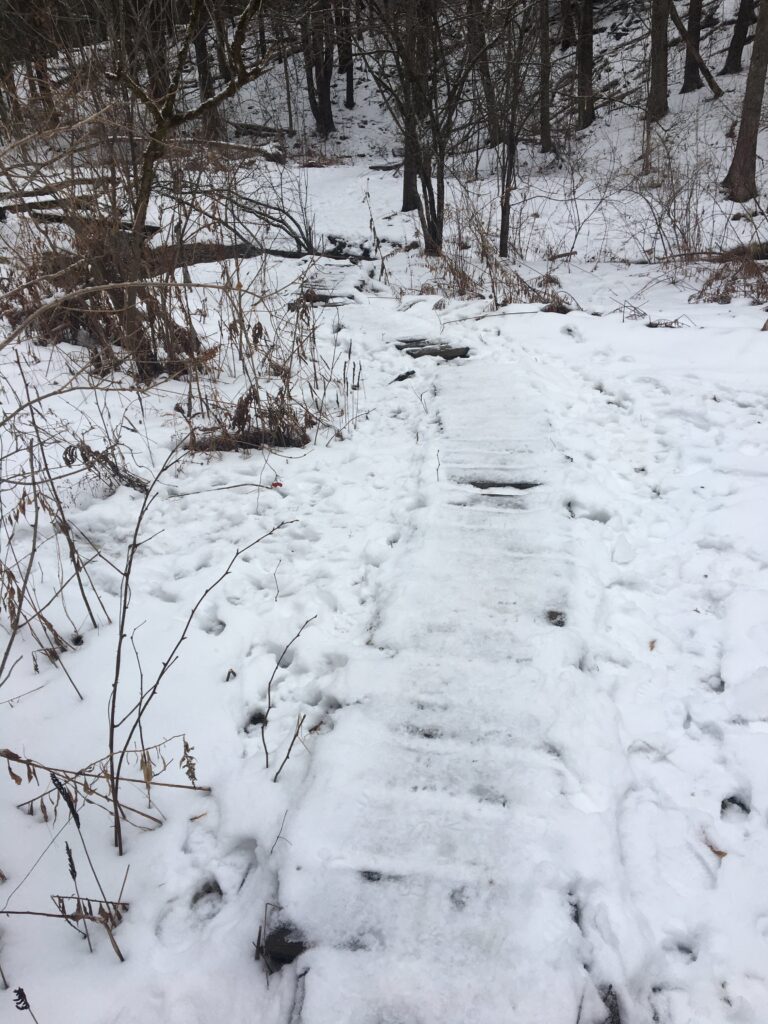
- Wildlife Activity (WA)
- Most of what I saw were human tracks, because my spot is on an area which gets a lot of foot traffic
- The second most popular track I found was most likely made by a dog, gray fox, red fox, gray wolf or coyote. I can infer this from the track being 8 centimeters (cm) x 8 cm at the top of the imprint, and all four of these animals have the same length and width on their tracks. It is also possible that the track is left from someone who was walking their dog. (see WA1 picture).
- The second track measured out to 4 cm x 16 cm. I came to the conclusion that it could be a cotton tail rabbit, since they do not hibernate and have long thin hind feet. (see WA2 picture)
- There was another track which appeared to belong to an animal that “gallops” to get around, but I could not identify it. My measurements say 8 cm x 28 cm (see WA3 picture).
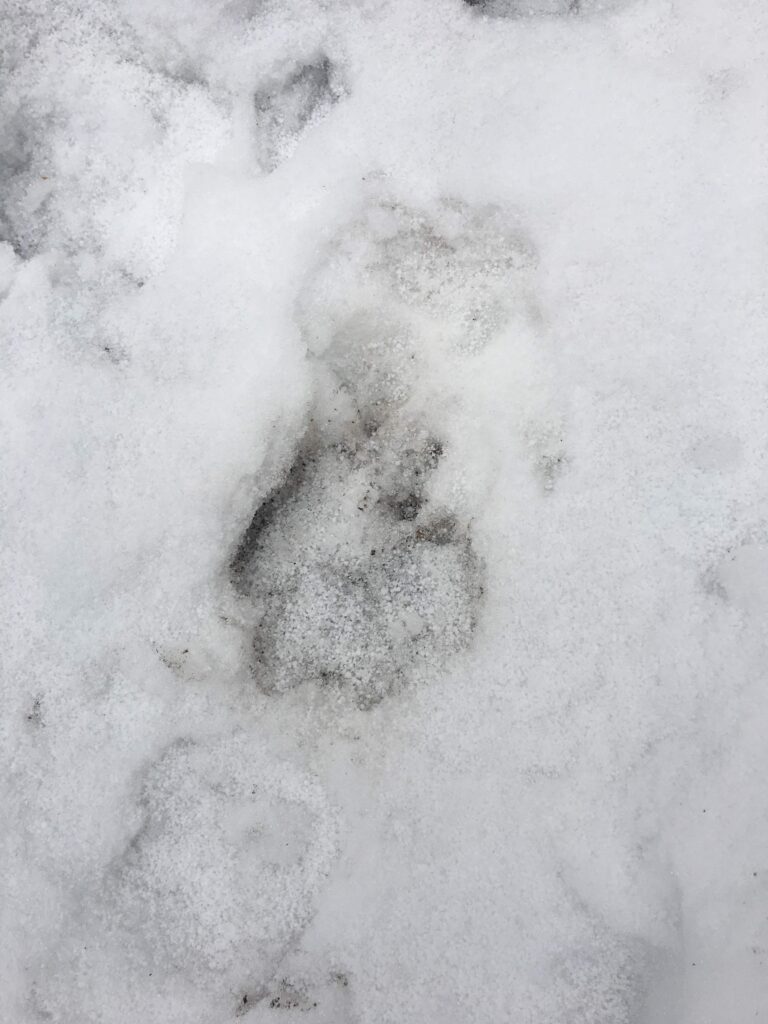
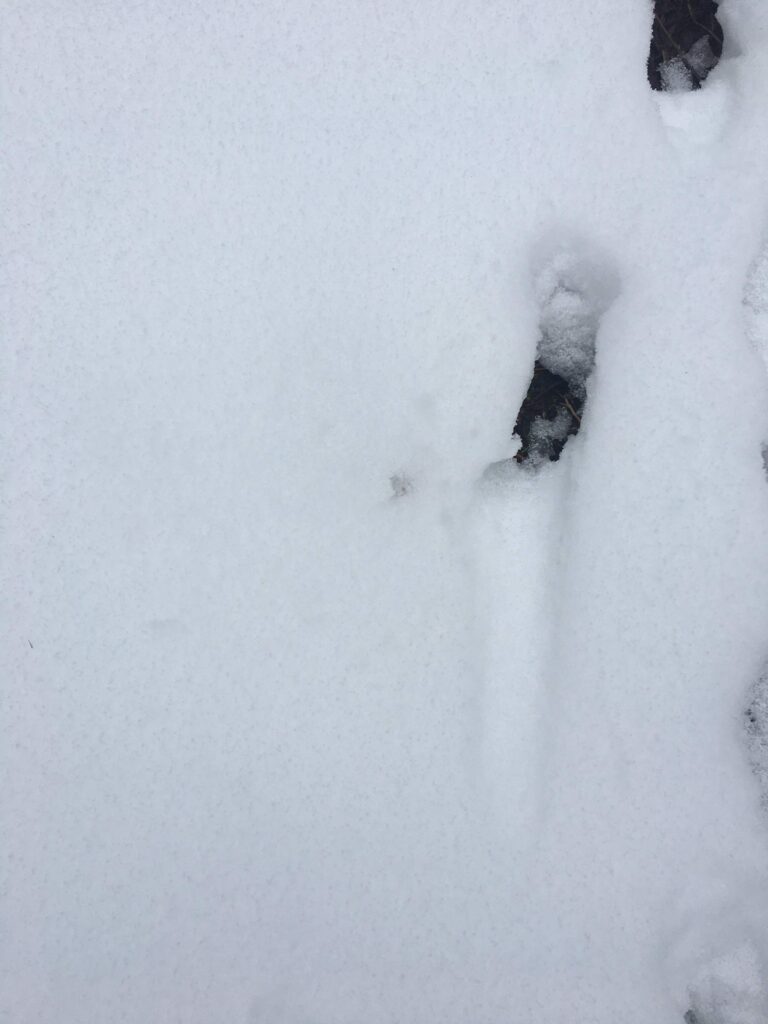

2) Twigs
- The first twig has small red buds which poke out quite a bit and comes from a gray tree that has smooth gray bark with shallow crevices traveling vertically. Using the twig guide, I found it is a red maple twig. This same plant plant was last identified as guelder-rose (See T1.1, T1.2, T1.3).


Cook, B (2019, November 5) received from https://blog.uvm.edu/bcook/2019/11/05/11-5-2019/
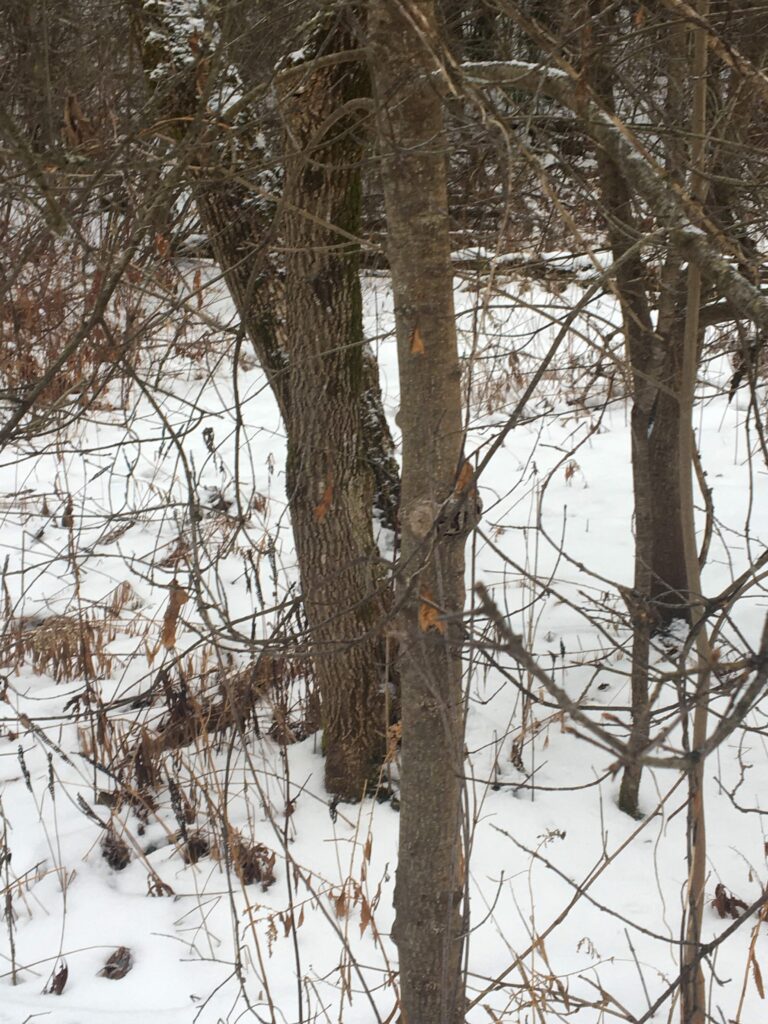
- The second twig has small gray buds that grow close to the twig and was growing on a browner tree with deep crevices traveling vertically. Using the twig guide, I identified it as box elder (see T2.1, T2.2).
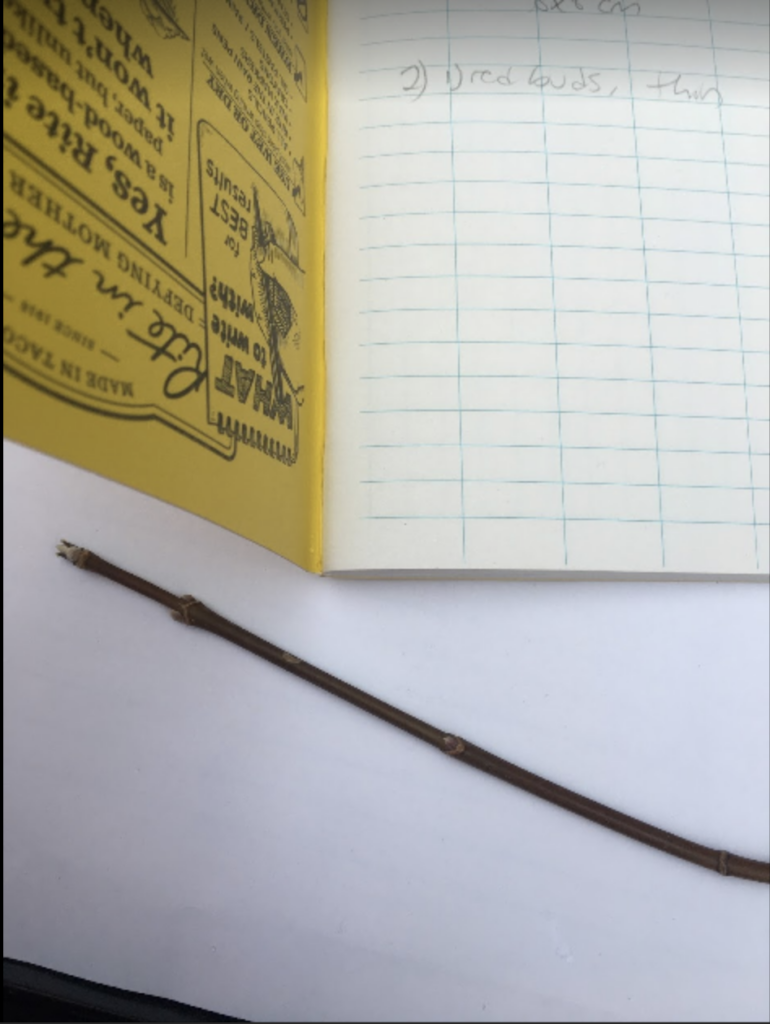

- The third twig has mini twigs which stick out and have brown buds on the end of them. The bark, again, is gray, smooth, and shallow crevices travel horizontally across it. The twig I picked off has a red berry attached. I have had trouble identifying it. I thought it was common winterberry, but the buds are much different. (see T3.1, T3.2)
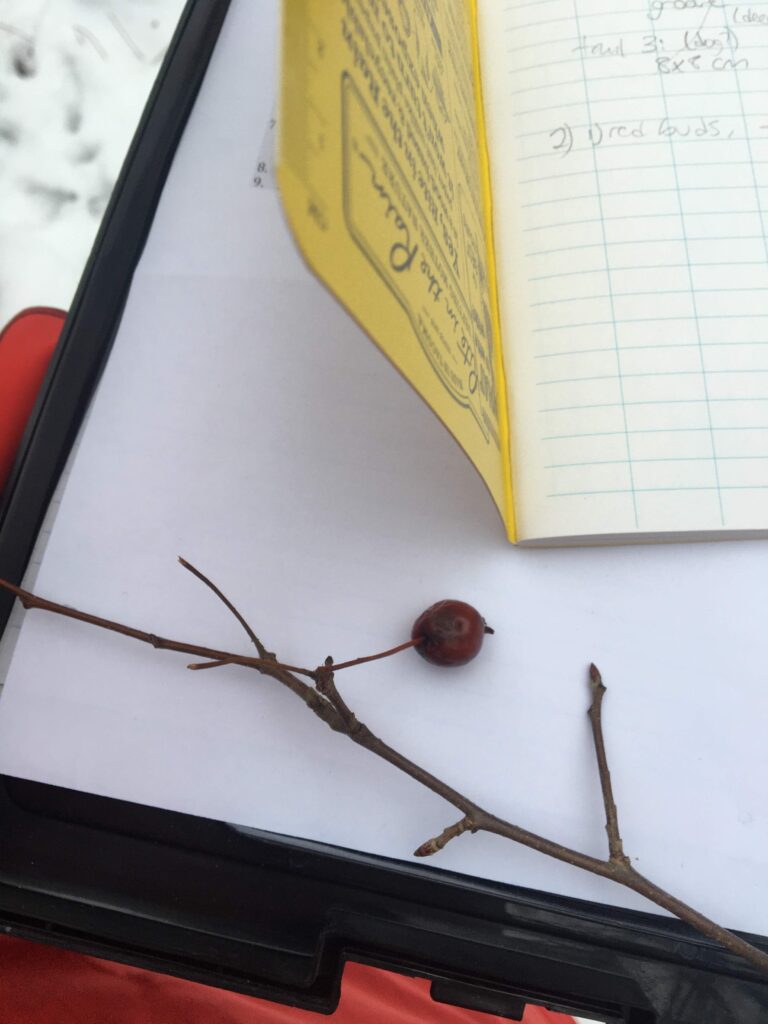
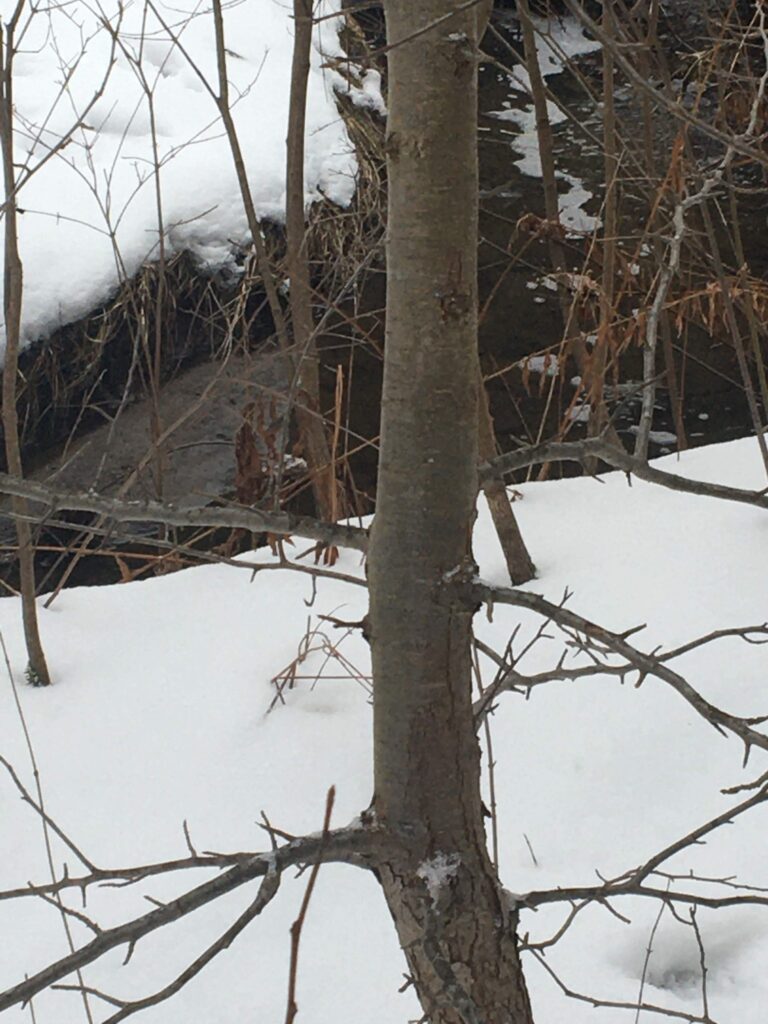
3. Twig sketch exercise
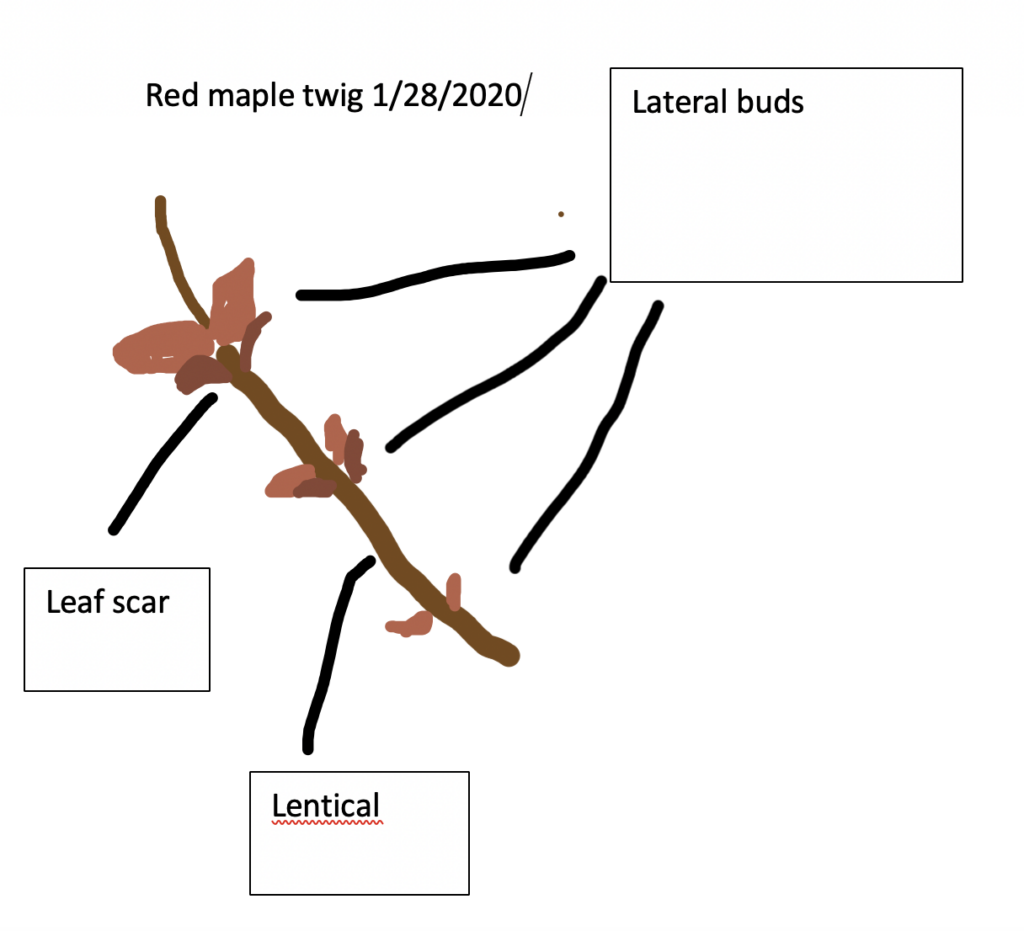
Works cited
Levine, Lynn. Mammal Tracks and Scat: Life-Size Pocket Guide. Heartwood Press, 2014.
Holland, Mary, and Chiho Kaneko. Naturally Curious: a Photographic Field Guide and Month-by-Month Journey through the Fields, Woods, and Marshes of New England. Trafalgar Square Books, 2019.
